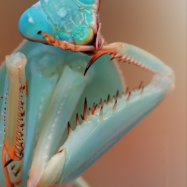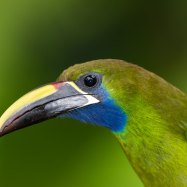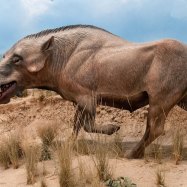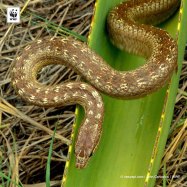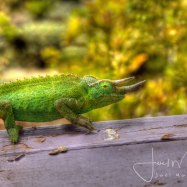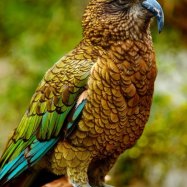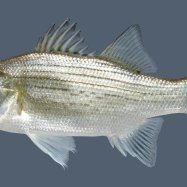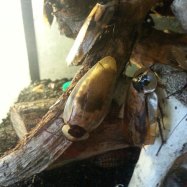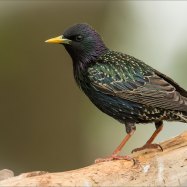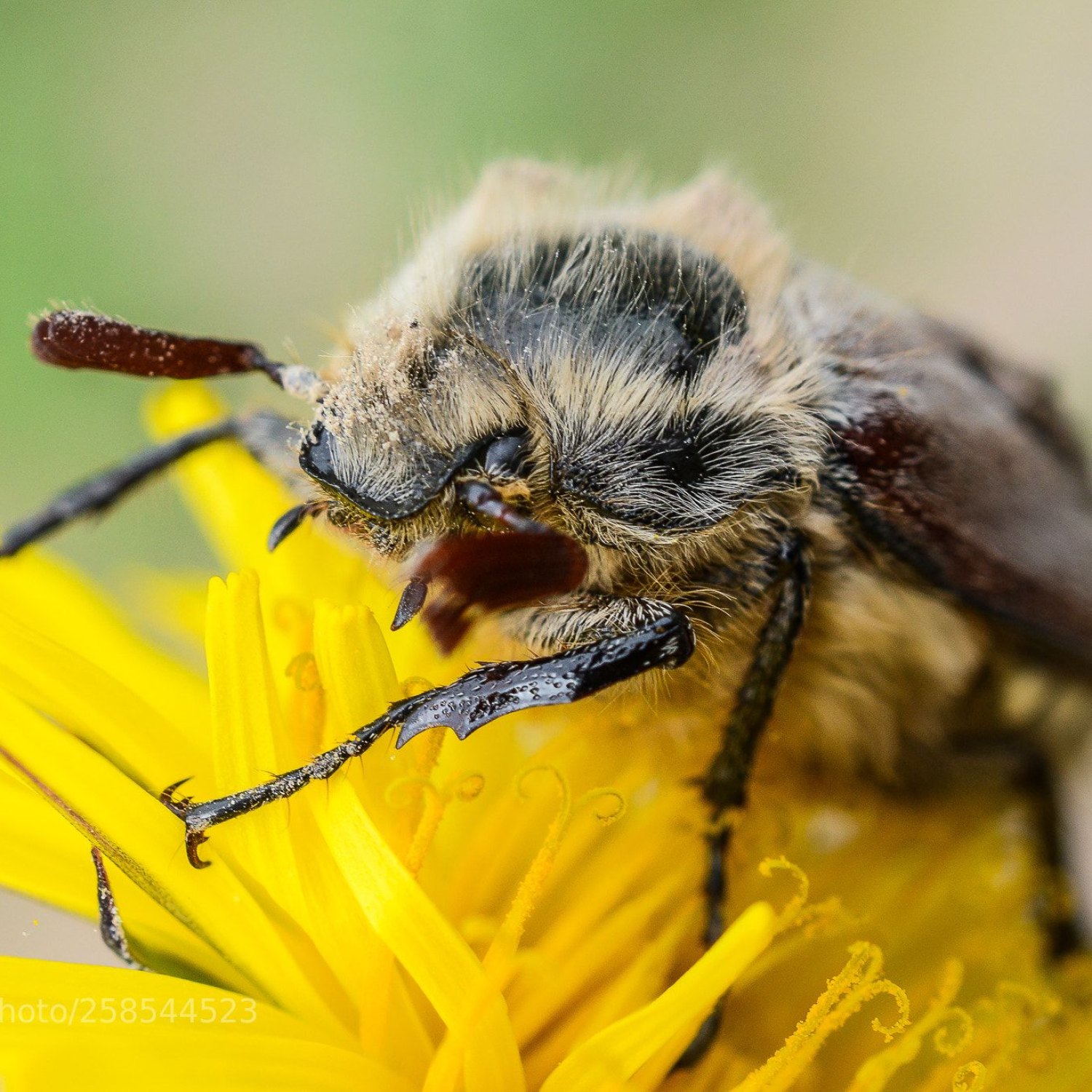
May Beetle
0.5 to 2 inches
The May Beetle, also known as a June Bug, has a compact oval-shaped body and can range from 0.5 to 2 inches in length. They can be found in various habitats and belong to the family Scarabaeidae. Keep an eye out for these common and fascinating creatures this summer!
Animal Details Summary:
Common Name: May Beetle
Kingdom: Animalia
Habitat: Grasslands, forests, gardens
Intriguing Insights into the World of May Beetles: From their Habitats to their Feeding Habits
Nature has a way of surprising us with its variety of species, each one unique and fascinating in its own way. The animal kingdom is full of creatures that amaze us with their coloration, body shapes, and habitats. One such creature that stands out is the May Beetle. The May Beetle, also known as the June Beetle, is a fascinating insect with a lot to discover May Beetle. In this article, we will take a closer look at this insect, from its scientific classification to its unique features and behaviors.Unveiling the May Beetle's Scientific Name and Taxonomy
The May Beetle belongs to the scientific genus Phyllophaga spp. and the kingdom Animalia, making it a part of the vast family of animals. It falls under the phylum Arthropoda, the largest and most diverse group of animals in the world, which includes insects, spiders, and crustaceans. Within the phylum, the May Beetle belongs to the class Insecta, the most diverse group of animals on the planet, with over a million described species.Moving down the taxonomic hierarchy, we come to the order Coleoptera, which is a group of insects known as beetles. The order includes over 400,000 described species, making it the largest order in the animal kingdom. The May Beetle's family, Scarabaeidae, is a subcategory of the Coleoptera order and includes over 30,000 species of scarab beetles.
Understanding the May Beetle's Habitat and Geographical Distribution
The May Beetle's geographical distribution is vast, with different species found all around the world Mexican Free Tailed Bat. Their native country depends on the species, with some found in North America, while others in Europe and Asia. These beetles are highly adaptable and can survive in various habitats, including grasslands, forests, and gardens. They are also frequently found in urban areas, making their way into gardens, parks, and even homes.The May Beetle's Unique Feeding Method
As herbivores, May Beetles primarily feed on plant material, including tree leaves, roots, and fruit. They are most active during the night when they are attracted to light sources, making them a common sight in illuminated areas. During the day, they are less active and can often be found hiding under leaves or in the soil.Interestingly, May Beetles are known for their unusual feeding method, which involves them releasing a foul-smelling odor as a defense mechanism against predators. This odor is similar to that of stink bugs and can be quite unpleasant for anyone who comes across it.
The May Beetle's Appearance: Coloration and Body Shape
The May Beetle's coloration is predominantly brown, with some variations among species. Their oval-shaped bodies have a compact and sturdy structure, perfect for digging and burrowing through soil. They have six legs and two antennae, which they use for sensing their surroundings and locating food.The May Beetle's size can range from 0.5 to 2 inches, depending on the species. Some may even grow up to 3 inches in length. They have a hard exoskeleton, which protects their bodies and also gives them their distinct appearance.
An Interesting Note on the May Beetle's Name
The May Beetle is also commonly known as the June Beetle, despite their name implying a different time of the year. This is because these beetles can be found in different months depending on their geographic location. For example, in the northern hemisphere, they are most active in June and July, while in the southern hemisphere, they are seen in December and January. This has caused some confusion over their name and is often a topic of debate among entomologists.The May Beetle's Role in the Ecosystem
As herbivorous insects, May Beetles play a critical role in maintaining the balance of their ecosystem. They help control plant growth by feeding on plant material, which can prevent overgrowth and competition among plants. They also serve as a food source for other animals, including birds, small mammals, and even other insects.In addition to their ecological significance, May Beetles have also been used by humans for various purposes. Some cultures consider them a delicacy and consume them as a protein-rich food source. In traditional Chinese medicine, the beetles are used as a natural remedy for various ailments, including headaches and diarrhea.
The Fascinating Life Cycle of the May Beetle
The life cycle of the May Beetle is an intriguing process that involves four distinct stages: egg, larva, pupa, and adult. The beetles usually lay their eggs in the soil during late spring or early summer, where they will hatch into larvae after a few weeks. The larvae, also known as grubs, spend most of their time underground, feeding on plant roots and organic matter. They can remain in this stage for up to three years, depending on the species.Once the larvae reach maturity, they will pupate and transform into adults. This process takes place in late summer or early fall, and once emerged, the adult beetles will spend the winter hibernating underground. In spring, they will emerge as adults, and the cycle will begin again.
May Beetles and Human Interactions
May Beetles are a common sight in gardens and parks, where they feed on plant material. They are generally harmless to humans and other animals, but their presence can sometimes become a nuisance. For example, when they emerge in large numbers, they can cause damage to crops and plants. In urban areas, they may be attracted to light sources and can end up inside homes, leading to unwelcome encounters.Some commercial pesticides are effective in controlling May Beetle populations, but they can also harm other beneficial insects and animals in the area. It is essential to use these products carefully and only when necessary to prevent any adverse effects on the environment.
How to Attract and Observe May Beetles in their Natural Habitat
Are you interested in observing these fascinating insects in the wild? The good news is that May Beetles are relatively easy to find and observe, especially during their active months. Here are a few simple ways to attract them:- Place a light source in your garden or outdoor area, as May Beetles are attracted to light and can be seen hovering around it at night.
- Create a compost pile in your garden, as this will provide a suitable breeding ground for the beetles, and you may spot them during their egg-laying period.
- Allow your garden to grow naturally, without using pesticides or chemical fertilizers. This will attract a variety of insects, including May Beetles.
Once you have attracted some May Beetles, you can observe them and learn more about their behaviors and habits. Remember to handle them carefully and return them to their habitat after observing them.
In Conclusion
The May Beetle may seem like a simple, unassuming insect but has much to offer in terms of its unique features, behaviors, and interactions with the environment. Its brown coloration, compact body shape, herbivorous feeding habit, and adaptable nature make it a fascinating creature to learn about. Whether you encounter them in your garden or decide to observe them in the wild, these beetles are sure to capture your attention and leave you in awe of the wonders of the animal kingdom.

May Beetle
Animal Details May Beetle - Scientific Name: Phyllophaga spp.
- Category: Animals M
- Scientific Name: Phyllophaga spp.
- Common Name: May Beetle
- Kingdom: Animalia
- Phylum: Arthropoda
- Class: Insecta
- Order: Coleoptera
- Family: Scarabaeidae
- Habitat: Grasslands, forests, gardens
- Feeding Method: Herbivorous
- Geographical Distribution: Worldwide
- Country of Origin: Varies depending on species
- Location: Various habitats
- Animal Coloration: Brown
- Body Shape: Oval, compact
- Length: 0.5 to 2 inches
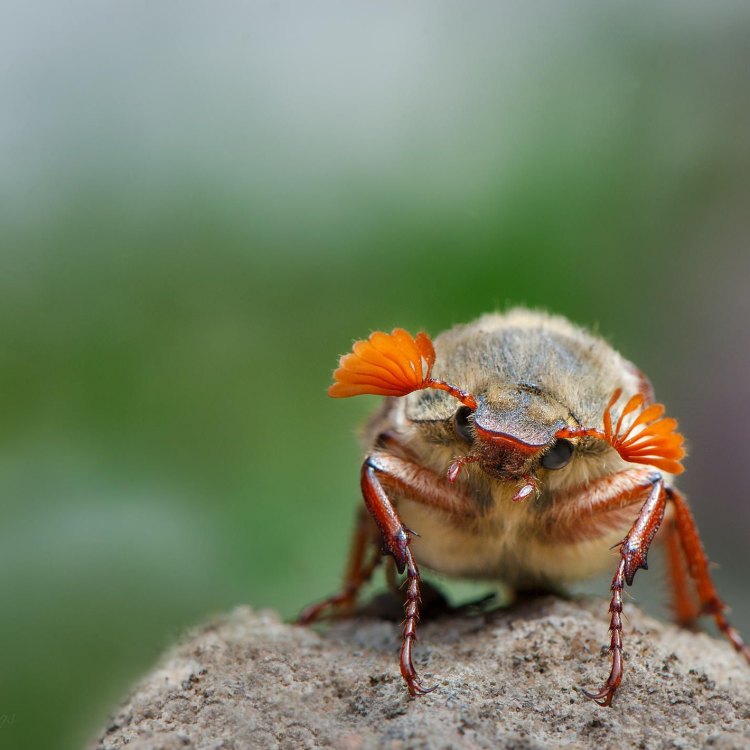
May Beetle
- Adult Size: Medium-sized
- Average Lifespan: 1 to 2 years
- Reproduction: Sexual
- Reproductive Behavior: Mating occurs in spring
- Sound or Call: None
- Migration Pattern: No regular migration
- Social Groups: Solitary
- Behavior: Nocturnal
- Threats: Habitat loss, pesticides
- Conservation Status: Not evaluated
- Impact on Ecosystem: May serve as a food source for other animals
- Human Use: None
- Distinctive Features: Hard exoskeleton, elytra covering wings
- Interesting Facts: May Beetles are attracted to lights at night
- Predator: Birds, mammals
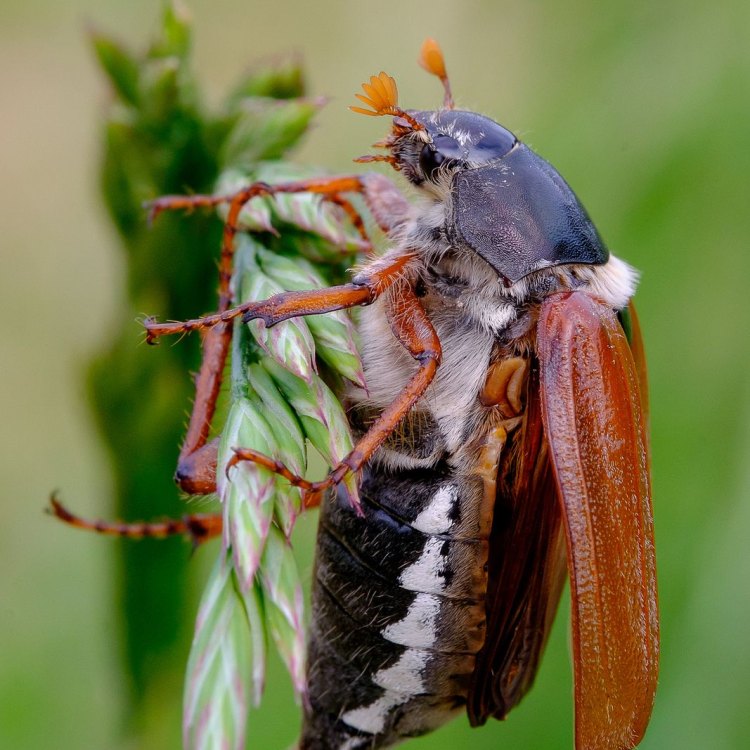
Phyllophaga spp.
The Fascinating World of May Beetles: An Intriguing Insect with Unique Features
In the world of insects, there are countless species that possess unique characteristics and play important roles in the ecosystem. Among them, the May Beetle (Melolontha melolontha) stands out with its distinct features and fascinating behaviors. Also known as "June Bug," "Cockchafer," or "Doodlebug," this medium-sized insect has captured the attention of many due to its intriguing nature. In this article, we will delve into the world of May Beetles, explore their distinctive features, and understand the role they play in the ecosystem PeaceOfAnimals.Com.The Basics: Adult Size, Average Lifespan, Reproduction, Reproductive Behavior
May Beetles fall into the category of medium-sized insects, with males measuring around 2 centimeters and females reaching up to 3 centimeters in length. They have an oval-shaped, robust body with a hard exoskeleton, characteristic of most beetles. These insects have a relatively long lifespan compared to other insects, living up to 1 to 2 years. This long life expectancy is due to their reproductive behavior.May Beetles reproduce sexually, with mating occurring in the spring. The male beetles use their sharp pincers to hold onto the female during mating. After mating, the females lay their eggs in the soil, which then hatch into larvae. These larvae, also known as "white grubs," live underground and undergo several stages of development before emerging as adults. This process can take up to 4 years, contributing to the May Beetle's long lifespan Mongrel.
Behavior and Migration Patterns
May Beetles are primarily solitary insects, and they are not known to form social groups. They are also predominantly nocturnal, meaning they are active during the night and rest during the day. This behavior may be due to their hard exoskeleton, which protects them from the sun's heat. They are rarely active during the day, except in the case of disturbance.Unlike many migratory insects, May Beetles do not have a regular migration pattern. They are typically sedentary, meaning they do not undertake regular movements from one place to another. However, they may be occasionally observed to fly in large groups, especially during mating season, in search of food or shelter.
Threats and Conservation Status
Like many other species, May Beetles face threats to their survival due to various human activities. Habitat loss and degradation, primarily through urbanization and land development, pose a significant threat to these insects. As larvae, they need healthy soil to thrive, and the destruction of their natural habitats reduces their chances of survival.Another threat to May Beetles is the use of pesticides. While these chemicals are designed to control pests, they can also harm beneficial insects like the May Beetle. Pesticides can kill both larvae and adult beetles, reducing their populations in the ecosystem. Additionally, these chemicals can also contaminate the soil, affecting the overall health of the ecosystem.
Despite these threats, the International Union for Conservation of Nature (IUCN) has not evaluated the conservation status of May Beetles. This is mainly due to a lack of comprehensive data on population numbers and trends. However, it is essential to stay vigilant and take necessary measures to protect these insects and their habitat.
The Impact on the Ecosystem
May Beetles may seem like ordinary insects that do not contribute much to the ecosystem. However, they play a crucial role in the food chain. As larvae, they feed on decaying plant matter, helping to break down organic material and return essential nutrients to the soil. They also serve as a food source for other animals, such as birds and mammals, contributing to a balanced ecosystem.Moreover, May Beetles are considered pollinators, playing a role in the reproduction of plants. While they are not as efficient as bees or butterflies, they still contribute to the pollination of various flowers and plants. Without these insects, some plant species may have difficulty reproducing, disrupting the delicate balance of the ecosystem.
Distinctive Features
One of the most distinctive features of the May Beetle is its hard exoskeleton. This protective layer covers their entire body, giving them a robust appearance. Underneath this armor, they have soft and delicate wings that they use for flying. However, these wings are mostly covered by another unique feature of May Beetles – elytra.Elytra are modified forewings that form a hard, protective covering over the delicate wings. These structures are commonly found in beetles and serve to protect the wings while providing stability during flight. In the case of May Beetles, elytra also give them their characteristic dome shape, adding to their recognizable appearance.
Interesting Facts about May Beetles
Aside from their distinctive features and behaviors, May Beetles also have a few interesting facts that make them stand out even more. For one, they are attracted to lights at night, and you may have observed them circling around light sources. This behavior is due to their reliance on light for navigation, and they mistake artificial light sources for the moon or stars. Additionally, May Beetles do not make any sounds or calls, unlike many other insects.Predators of May Beetles
Despite their hard exoskeleton and protective elytra, May Beetles have several natural predators. Birds, including sparrows and starlings, are known to feed on these insects. Some mammals, such as squirrels and shrews, also feed on May Beetles, particularly during their larval stage. Additionally, some insect predators, such as dragonflies and robber flies, may also prey on May Beetles, making them vulnerable at all stages of their life cycle.In Conclusion
The May Beetle may not be the most well-known or studied insect species, but it has several unique features and behaviors that make it worthy of our attention. From its hard exoskeleton to its distinctive elytra, this insect has evolved to thrive in its environment. However, they face threats from habitat loss and pesticides, reminding us of the delicate balance in the ecosystem. As we continue to learn more about these fascinating insects, it is crucial to appreciate and protect them for future generations.

Intriguing Insights into the World of May Beetles: From their Habitats to their Feeding Habits
Disclaimer: The content provided is for informational purposes only. We cannot guarantee the accuracy of the information on this page 100%. All information provided here may change without prior notice.

